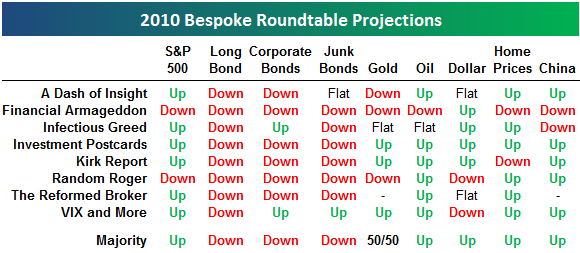Что же будет с Родиной и с нами?
Пока мало кто пишет (в моей ленте только я да av_rybin) можно позабивать эти самые ленты всяким :)
Все дают прогнозы на 2010 год. Вот один из множества:

( Read more... )
Все дают прогнозы на 2010 год. Вот один из множества:

( Read more... )
Submitted by TrimTabs' Charles Biderman
Are Federal Reserve and U.S. Government Rigging Stock Market? We Have No Evidence They Are, but They Could Be. We Do Not Know Source of Money That Pushed Market Cap Up $6+ Trillion since Mid-March.
The most positive economic development in 2009 was the stock market rally. Since the middle of March, the market cap of all U.S. stocks has soared more than $6 trillion. The “wealth effect” of rising stock prices has soothed the nerves and boosted the net worth of the half of Americans who own stock.
We cannot identify the source of the new money that pushed stock prices up so far so fast. For the most part, the money did not from the traditional players that provided money in the past:
• Companies. Corporate America has been a huge net seller. The float of shares has ballooned $133 billion since the start of April.
• Retail investor funds. Retail investors have hardly bought any U.S. equities. Bond funds, yes. U.S equity funds, no. U.S. equity funds and ETFs have received just $17 billion since the start of April. Over that same time frame bond mutual funds and ETFs received $351 billion.
• Retail investor direct. We doubt retail investors were big direct purchases of equities. Market volatility in this decade has been the highest since the 1930s, and we no evidence retail investors were piling into individual stocks. Also, retail investor sentiment has been mostly neutral since the rally began.
• Foreign investors. Foreign investors have provided some buying power, purchasing $109 billion in U.S. stocks from April through October. But we suspect foreign purchases slowed in November and December because the U.S. dollar was weakening.
• Hedge funds. We have no way to track in real time what hedge funds do, and they may well have shifted some assets into U.S. equities. But we doubt their buying power was enormous because they posted an outflow of $12 billion from April through November.
• Pension funds. All the anecdotal evidence we have indicates that pension funds have not been making a huge asset allocation shift and have not moved more than about $100 billion from bonds and cash into U.S. equities since the rally began.
If the money to boost stock prices did not come from the traditional players, it had to have come from somewhere else.
We do not know where all the money has come from. What we do know is that the U.S. government has spent hundreds of billions of dollars to support the auto industry, the housing market, and the banks and brokers. Why not support the stock market as well?
Что самое интересное отдельные бумаги на америкаснком рынке так не торгуются почему-то - никто не кричит что все супер акции летят без остановок вверх. Бывают очень даже сильные коррекции на хороших бумагах, которые этого не заслужили. Поневоле зздумаешься
Reply
Leave a comment